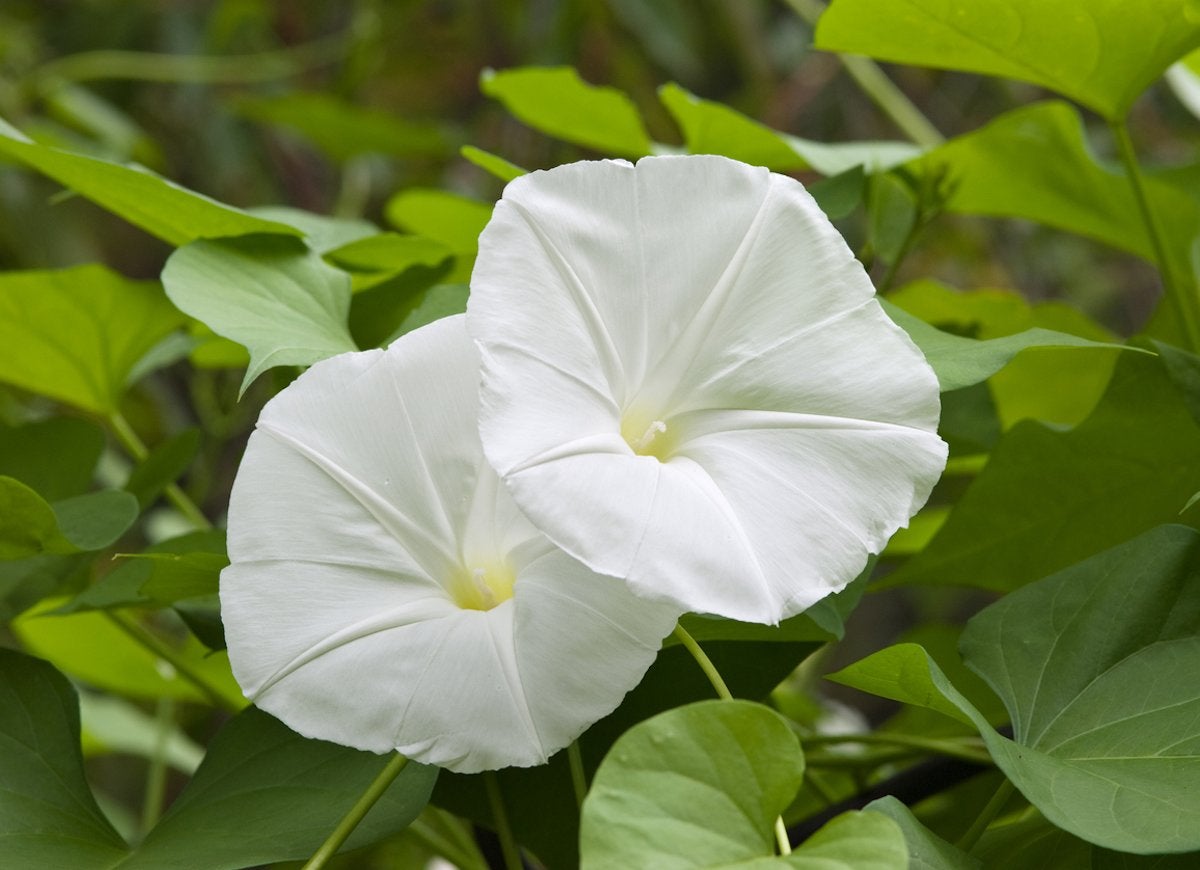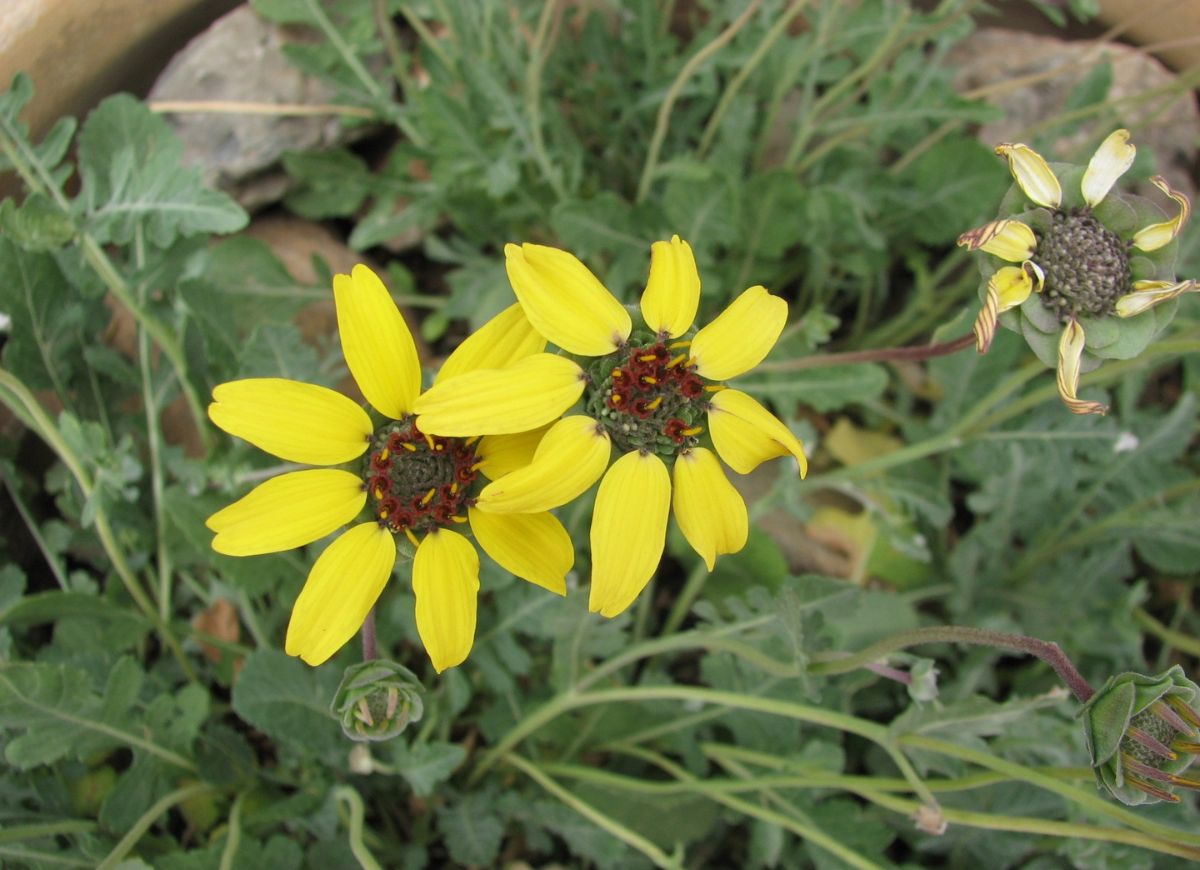

We may earn revenue from the products available on this page and participate in affiliate programs. Learn More ›
Home Advice You Can Trust
Tips, tricks & ideas for a better home and yard, delivered to your inbox daily.
Night Owls

Outdoor spaces allow you to extend the enjoyment of your home beyond its four walls and out onto the rest of your property—by both day and night. Enhance your outdoor living by planting a moon garden—a garden that’s meant to be enjoyed in the evening, filled with flowers that bloom well into the night.
Evening Primrose

Oenothera biennis, commonly known as evening primrose, has sweet yellow flowers and is prolific throughout the United States. Native to North America, this wildflower blooms at night from May to July and is known to have a variety of medicinal uses.
Moonflower

Moonflower (Datura species) is both fragrant and exotic. Its large, white trumpet-shaped flowers unfurl at night and reflect the moon’s light. And while many varieties of moonflower have an alluring lemon scent, they are poisonous and should be planted well away from areas where children and pets play.
Foamflower

Tiarella cordifolia, also called foamflower, loves shade and makes a lovely addition to a woodland garden or walking path. Low maintenance and easy to grow from seed, foamflower’s blooming spikes of spidery flowers add evening interest to the yard and return year after year.
Casa Blanca Lily

The Casa Blanca lily (Lilium ‘Casa Blanca’), like all lilies, makes a bold statement in the garden. It blooms well into the season and tolerates many soil types and conditions. The Casa Blanca variety is unique in that it blooms in the evening, with its pure white flowers reflecting light from the moon for a garden that truly shines.
Four O’Clocks

Blooming from dusk until dawn, four o’clocks (Mirabilis jalapa) are an old-fashioned favorite. Available in a great variety of colors, from yellows to purples and even stripes, they are easy to grow from seed and reach two to three feet tall. Enjoy these annuals from midsummer to frost, or if you live in a warmer winter climate, expect to see these flowers return year after year.
Tuberose

Native to Mexico, tuberose (Polianthes tuberosa) is a night bloomer with a heavenly scent. It produces a long flowering spike that can reach four feet tall, festooned in white, waxy, fragrant blooms. Its flowers attract as much attention for the way they reflect the moonlight on summer evenings as they do for their exceptional aroma.
Mock Orange

Mock orange (Philadelphus x virginalis) grows as a bush, sometimes reaching 10 feet tall, and can work well as a border hedge. After the white, orange-scented blossoms fade, the dark green foliage remains through the growing season.
Night-Blooming Jasmine

Cestrum nocturnum, or night-blooming jasmine, isn’t actually jasmine, but rather a tropical nightshade. Its tiny, fragrant, white flowers make a stunning contrast to its dark, leathery-green leaves. Plant this shrub close to a porch, patio, or window, where you can enjoy its heady scent in summer evenings.
Angel’s Trumpet

Angel’s trumpet (Brugmansia) is happiest growing in zones 8 through 11 but can be grown farther north if brought indoors for winter. It’s worth the effort of growing it: This highly poisonous plant has an alluring fragrance and puts on a show of dramatic, peach-colored, bell-shaped flowers all season long.
Nicotiana

Flowering tobacco, also known as Nicotiana
, is a colorful addition to any garden bed. Available in pinks, reds, whites, and even pale green, this flower is a perfect pick for a moon garden, Nicotiana’s strong scent will attract hummingbird moths at night, when its flowers open to provide a nectar buffet for hungry animals.
Night-Blooming Cereus

This flowering cactus grows natively in the southwestern United States, specifically the Sonoran Desert in Arizona, and can be trained to climb up a trellis outdoors or potted up as an easy-care houseplant. Night-blooming Cereus flowers are large and white and start blooming after the plant is about 5 years old. You’ll have to wait until the sun goes down to see the blooms, which fully open around midnight and exude a sweet fragrance. Come morning light, Cereus flowers droop and die. If pollinated, however, the flowers produce a sweet edible fruit.
Night Phlox

Wikimedia Commonapeganum from Henfield, England, CC BY-SA 2.0, via Wikimedia Commons
Known for their small red-backed, white flowers, Night phlox (Zaluzianskya capensis) add delicate florals to your moon garden. These little beauties are a semi-evergreen perennial that grow up to 12 inches tall and wide and take about a year to reach their full height.
Though they bloom at night, night phlox grow best in full sun, when the star-shaped flowers curl up tight. These flowers fare well in flower beds, container gardens, rock gardens, and more providing they’re planted in a moist, well-drained soil.
Night Gladiolus

Night gladiolus, or Gladiolus longicollis, come from the iris family. Known for their long-tubed flowers, Night Gladiolus tend to be a white or pale yellow, either uniformly colored or streaked with brown. These flowers have a sweet but spicy fragrance that smells like carnation and cloves.
Gladiolus longicollis come from Southern Africa, where they can grow almost 2 feet tall. Beware these botanicals because they are toxic if ingested, and may cause skin rash or irritation if they come in contact with skin.
Nottingham Catchfly

Flickr via Joost J. Bakker IJmuiden
The name behind this perennial comes from where these flowers were first discovered—the walls of Nottingham Castle. Also known as Silene nutans, the Nottingham catchfly has a strong scent to attract nocturnal insects and moths when it blooms from May to July.
These flowers like full sun to partial shade, and they are found in coastal habitats, meadows, and fields. That said, this species is fairly limited in North America, found in areas such as Michigan, Ohio, New York, and Maine. You can identify Nottingham Catchfly by its five pinkish-white petals per flower, two leaves per node on the stem, and short and sticky hairs along the stem and stalk.
Chocolate Daisy

Melburnian, CC BY-SA 3.0, via Wikimedia Commons
The name is no coincidence, as the blooms on these flowers smell like chocolate, and their stamens taste like dark chocolate too. Though given the moniker chocolate daisy (Berlandiera lyrata), this velvety-leaved perennial is actually a member of the sunflower family. The family resemblance can be found with the bold yellow petals and burgundy center.
Growing up to 2 feet tall and blooming from April to November, these wildflowers do best in areas of sun and partial shade with well-drained soil. During the heat of the day they’ll droop, but come nighttime, these deer-resistant flowers unfold into happy and bright blooms.

All You Need to Care for Your Lawn & Garden
Keeping your grass green and your plants thriving doesn’t just take a green thumb—it starts with the right tools and supplies.